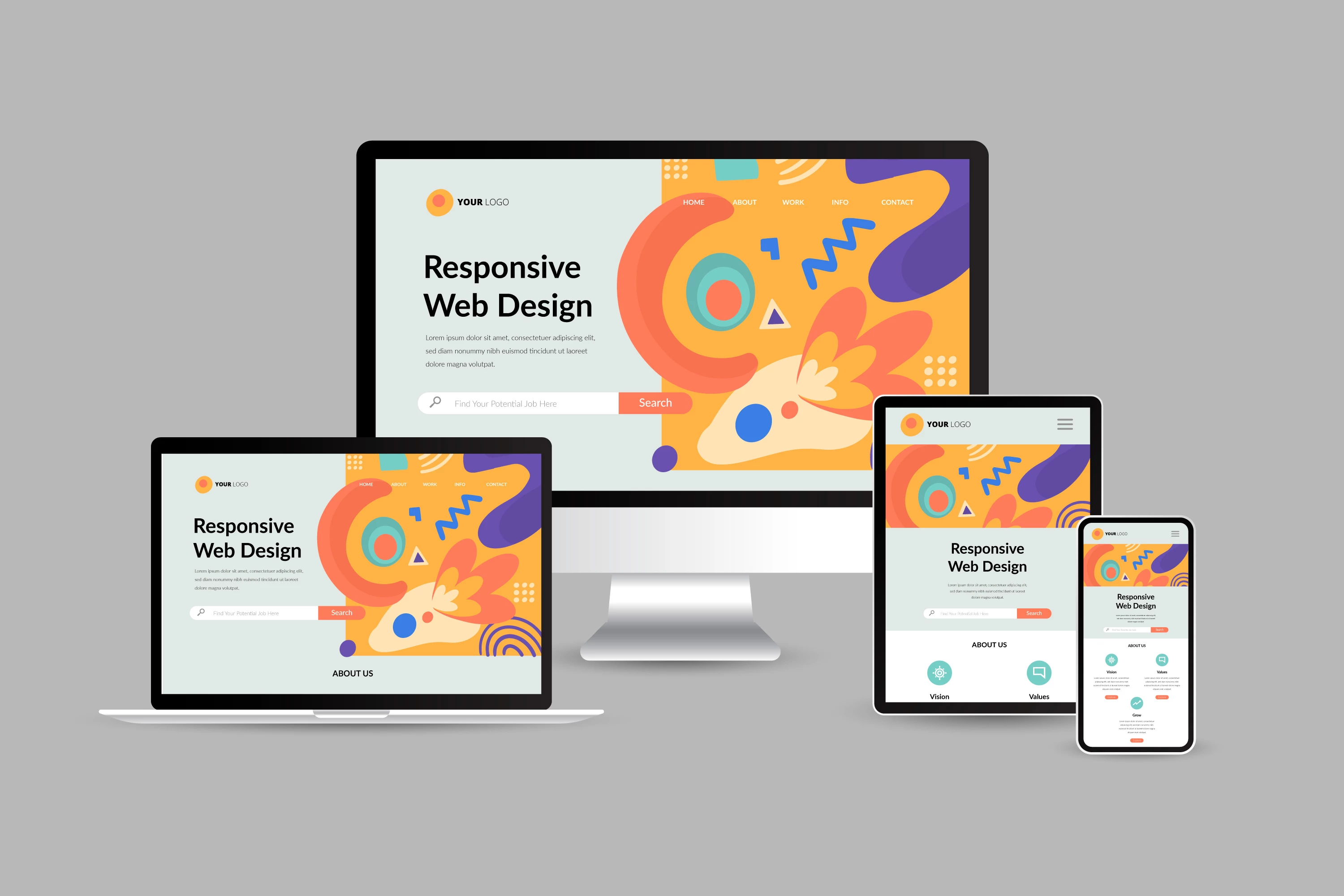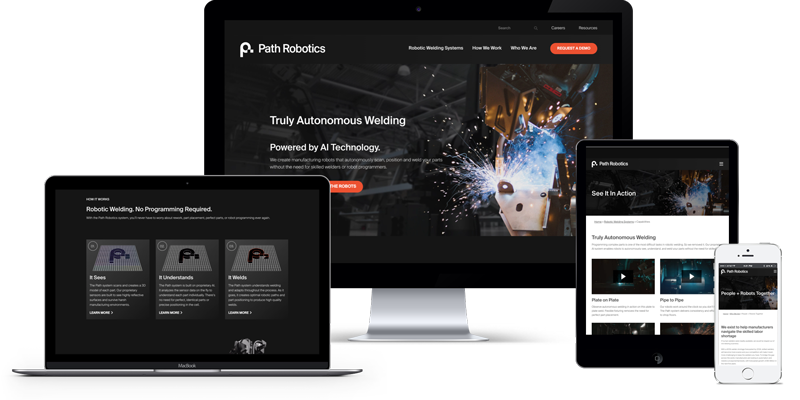Secret Methods for Implementing User-Centric Internet Site Style to Increase Involvement
When taking into consideration the implementation of user-centric web site layout, particular techniques are crucial in increasing engagement. Extensive research into customer demands and choices forms the foundation, leading the development of individual personas to educate design options. Individualizing material boosts customer fulfillment, and robust accessibility attributes broaden reach.
Recognizing User Demands
Comprehending individual demands is an essential action in the process of user-centric web site style. Techniques such as surveys, interviews, and customer screening can give important qualitative and measurable information concerning exactly how users connect with the internet site.
Examining this data enables developers to produce thorough user personalities that represent the various sectors of the target audience. These personalities assist educate layout decisions by highlighting specific individual objectives and obstacles, leading the growth of features that deal with these needs efficiently. Moreover, recognizing the context in which individuals run-- such as their setting, device preferences, and time restrictions-- can additionally fine-tune the style technique.
Compassion plays an important function in this process, enabling developers to see the website from the individual's point of view. By prioritizing customer requirements, the style process becomes more concentrated, stopping the inclusion of unnecessary aspects that might clutter the user experience. Ultimately, a deep understanding of customer requirements is critical in crafting an internet site that is both useful and significant.
Designing Instinctive Navigation
Having actually developed a thorough understanding of customer requirements, the following action in user-centric site design entails producing instinctive navigating. Effective navigation is essential to user satisfaction, affecting exactly how conveniently individuals can find details and full tasks. To attain user-friendly navigation, developers need to prioritize simplicity and quality, making sure that the navigation framework is rational and consistent throughout the site.
Organizing web content into a clear power structure is essential. Website Design. Making use of familiar labels and icons can assist users effortlessly, lowering cognitive lots and enhancing the general customer experience. A well-designed navigation bar must be plainly positioned, enabling customers to recognize their current area and conveniently check out various other areas of the internet site
It is likewise crucial to include interactive elements such as breadcrumbs and search performances to help individuals in browsing complicated websites. These attributes supply additional pathways and improve the availability of web content, dealing with various user choices and habits.
Checking navigating with actual customers is essential to recognize possible pain points and make sure functionality aligns with user assumptions. Routine feedback loopholes and iterative improvements can aid preserve an effective navigating system that adjusts to progressing individual needs, inevitably boosting engagement and complete satisfaction.
Creating Receptive User Interfaces
Invariably, creating receptive interfaces is a crucial facet of contemporary website design, ensuring that internet sites are functional and obtainable throughout a wide variety of tools and screen sizes (Website Design). This versatility is important in a landscape where individuals access material using smartphones, tablets, laptops, and desktops, each with varying orientations and resolutions. The main objective of receptive style is to improve individual experience by preserving optimum readability and use, no matter the tool utilized
To accomplish this, internet designers utilize versatile grid formats, liquid pictures, and CSS media queries. Adaptable grids permit web site components to resize proportionally, while fluid photos guarantee visuals range properly without losing top quality. Media inquiries play a crucial duty by using various designs based upon the tool's qualities, such as alignment, height, and size, hence tailoring the format to the user's display.
Additionally, responsive user interfaces contribute to boosted search engine optimization (SEARCH ENGINE OPTIMIZATION) by offering you can try here a seamless user experience, which in turn can minimize bounce rates and boost website engagement. In summary, adopting receptive design is not simply a technical factor to consider however a crucial method for promoting a user-centric internet setting that meets the demands of a varied audience.

Customizing Content Experience
Individualizing material experience is a vital component of user-centric website layout that entails tailoring content to fulfill the one-of-a-kind preferences and habits of specific customers. This strategy not just boosts customer contentment however additionally promotes much deeper involvement, as visitors are most likely to interact with web content that reverberates with their demands and rate of interests. By leveraging data analytics and individual feedback, organizations can identify patterns and trends that inform the modification of internet material.
Integrating personalization strategies can vary from easy modifications, such as advising products based upon surfing background, to extra sophisticated techniques like vibrant material that adapts in real-time to an individual's interactions. For instance, customized landing web pages can substantially raise conversion prices by offering customers with relevant information and supplies that align with their previous tasks and preferences.
Additionally, using synthetic knowledge and device understanding can even more refine content personalization by continuously gaining from individual behaviors and adapting to emerging fads. This not only enhances the customer's trip but additionally constructs brand name loyalty, as consumers feel understood and valued. Ultimately, customizing the web content experience is a crucial strategy for companies intending to develop a more purposeful and interesting interaction with their audience.
Enhancing Availability Attributes
Enhancing ease of access attributes is an essential element of user-centric site style, making sure that electronic content is useful by every person, including people with specials needs. This strategy not just complies with legal standards such as the Americans with Disabilities Act (ADA) and the Web Content Ease Of Access Guidelines (WCAG) but additionally considerably widens a site's target market reach. By integrating functions like keyboard navigation, screen reader compatibility, and different message for images, web sites end up being more comprehensive, providing a smooth experience for users with aesthetic, acoustic, or electric motor problems.
Incorporating responsive design this hyperlink aspects is critical, promoting gain access to on various gadgets and display sizes, therefore accommodating customers with different page choices and demands. Contrast proportions and text dimension modifications can improve readability for people with aesthetic challenges. Supplying clear and concise web content structure, such as headings and listings, aids understanding and navigating, specifically for customers with cognitive specials needs.
Routine availability audits must be conducted to determine and remedy potential barriers, making certain ongoing compliance and functionality. By prioritizing ease of access, companies not just foster inclusivity yet likewise enhance total individual involvement and satisfaction, eventually driving greater conversion prices and enhancing brand name commitment.

Verdict
Incorporating user-centric style techniques substantially boosts site engagement by focusing on the requirements and choices of users. Thorough research assists in the development of user identities, leading targeted design choices.
Comprehensive research study into individual demands and choices forms the foundation, assisting the creation of customer personalities to notify design selections. Strategies such as surveys, interviews, and individual screening can supply useful qualitative and quantitative information concerning exactly how customers connect with the web site.
By prioritizing customer demands, the layout procedure becomes much more focused, avoiding the addition of unnecessary aspects that can clutter the individual experience. Reliable navigating is essential to individual contentment, affecting how quickly users can discover info and full tasks. The use of familiar tags and symbols can assist customers easily, lowering cognitive load and enhancing the overall individual experience.